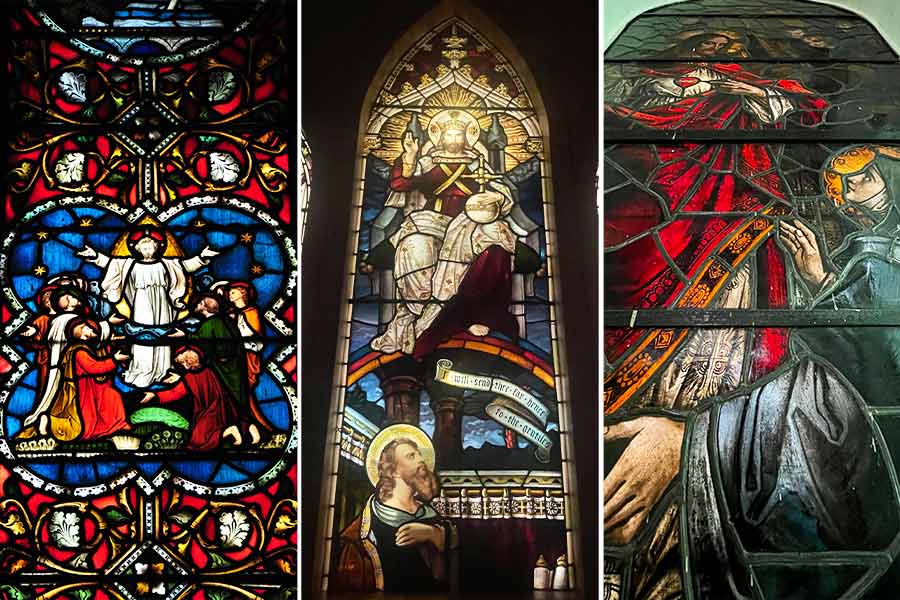
The stained-glass wealth of Kolkata churches: magical – and almost divine Photos: Mudar Patherya
Don't Miss
Few architectural interventions by the British have had as rich an influence on their subjects as the stained glass
 |
| Photos: Mudar Patherya |
MUDAR PATHERYA | TT | 12.02.24 : Calcutta’s romance with stained glass has been restricted to its churches. Even within these churches, their influence has been limited to day parts – largely mornings when the sun is torching into them from behind. The moment the sun migrates around its arc, the stained glass must depend on reflected illumination; by dusk, the stained glass is reduced to a grey that must live in the wait of the next sunrise.
Few architectural interventions by the British have had as rich an influence on their subjects as the stained glass – for scale, content, complexity, vividness and technology. In Calcutta, there is a premium on the ability to preserve the stained glass, because most are as old as the churches and hence more than 150 years; they also account for a valuable slice of colonial influence.
My growing engagement with the churches of Calcutta (for different heritage outcomes) proved to be an eye-opener in more senses than one: the sheer detail of the stained glass at St Mary’s Church on Elgin Road (sadly without back illumination that reduces the glass to almost like grey sheets by the evening); the sheer grandeur of the stained glass at St Paul’s (not permitted to photograph on account of a cathedral rule); the rich stained glass panel behind the chair of Bishop Paritosh Canning inside Bishop’s House that should ideally have been made visible for a larger audience; the stained glass at Sacred Heart Church on Dharamtalla Street that was curated in Munich around 180 years ago and has been backlit for an evening audience; the stained glass at St Thomas’ Church in Middleton Row that scatters coloured morning blurs on the marbled floor; the circular stained glass sheets that transmit a rich sequence of colour tones across synagogue floors (Maghen David and Beth El); the sequence of stained glass on an unilluminated Francis Xavier Church on BB Ganguly Street.
To widen my understanding, I turned to the 22-year-old stained-glass practitioner Katayun Saklat (her passport places her in the eighties but I would rather go by sentimental evidence over the chronological) for her insight into the subject and its relevance to our city.
Her narrative follows:
“A number of people have asked why the people of old invested so extensively in stained glass when they could have commissioned paintings for less. The answer is that the larger a painting, the higher it would extend towards the ceiling; the upper parts of the painting – the heads and upper parts of the bodies of the saints – would appear considerably reduced and largely invisible to those examining from below. Besides, these paintings would need to be illuminated in the evening at a time when there was no electricity, increasing the risk of fumes darkening the walls, ceilings, and adjacent paintings. The stained glass proved to be a superior alternative: brilliantly illuminated by day (irrespective of the height of the installation) as well as a facade adornment.
 |
| Stained-glass practitioner Katayun Saklat |
“There was another reason behind the relevance of the stained glass. The concept was introduced centuries ago, when most of the devotees were illiterate. The stained glass served as a drawing board; the depicted figures proved larger than life; the natural backlight made them appear heavenly; people looked up at the stained glass and that made their engagement aspirational and inspirational. These stained-glass sheets were not intended to entertain; they were meant to inspire. Some of these sheets were placed so precisely in churches, that at a specific moment in the morning while mass would be in progress, the orb of the sun would have been aligned with the face of Christ and when that beam would be extended it would slant down in a shaft on the priest leading the service. That would be gradual, but when it happened, it would be magical – and almost divine. One presumes that the number of attendees in this church would be higher than the other churches for precisely this reason – which people construed as a divine act. This was how the form would have been intelligently designed around the function of the church for a sustainable outcome. This attention to detail did more than merely move the congregation; it positioned the stained glass centrally to the place of worship.
“One of the most striking stained glass lies in the St Mary’s Church on Elgin Road. What makes this different from the other stained glass in the city is that its windows are small and relatively compact; the stained glass is beautifully mediaeval; the artist used a limited range of colours intelligently; from what I remember, the colours – about six – were curated as a subconscious visual journey across the stained-glass sheet. Their respective inter-spacing emphasised some colours and de-emphasised others. The lead breaks within the panel were planned scientifically to hold the glass pieces together functionally without affecting the overall narrative. I would recommend that Calcuttans visit this church to examine this stained-glass piece; it has been installed at the end of the aisle without a grand statement. It almost appears as an afterthought.
“I was fortunate to study with the legendary mediaeval stained-glass genius Patrick Reyntiens in the early ’70s. He had spent a part of his World War II time with the army in churches where he could perceive the stained glass come to life at dawn and descend into darkness following sunset – and that extended experience seeded an idea that transformed him into one of the most prominent practitioners of this art in the 20th century.
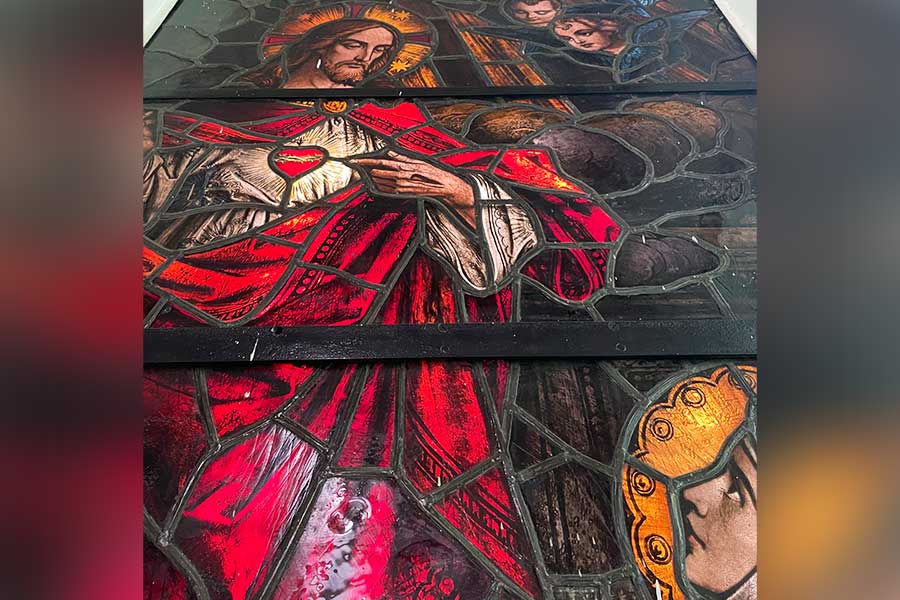 |
| At Sacred Heart Church |
“I could not afford six hundred pounds sterling to study under him; his wife and he raised half that amount while the British Council paid the rest. That single act of generosity opened me out to a rarified eight-acre world. It was inspirational to work with him; he embarked on the stained glass of Liverpool Cathedral for just one reason – not because he would or would not be paid but because the cathedral had been destroyed in the Second World War including the stained glass and it was imperative to revive it. When I saw Liverpool Cathedral, I expected to be merely impressed; instead, I had been moved to the point of tears of what Patrick had done, why he had done and where he had done.
“For six months before my course with Patrick, I engaged as ‘au pair’ or helper as that experience would keep me engaged. I worked four hours a day to look after his studio and helped serve lunch. The engagement came with a discipline: since I was not technically his student as yet, he said ‘You may watch me teach, but I will not be able to teach you directly.’ This meant that if I sought to replicate anything of what he may have taught, I could not simply pick glass off the table; I would have to collect the fragments he may have discarded into the dustbin. This arrangement gave Patrick a sense of political correctness.
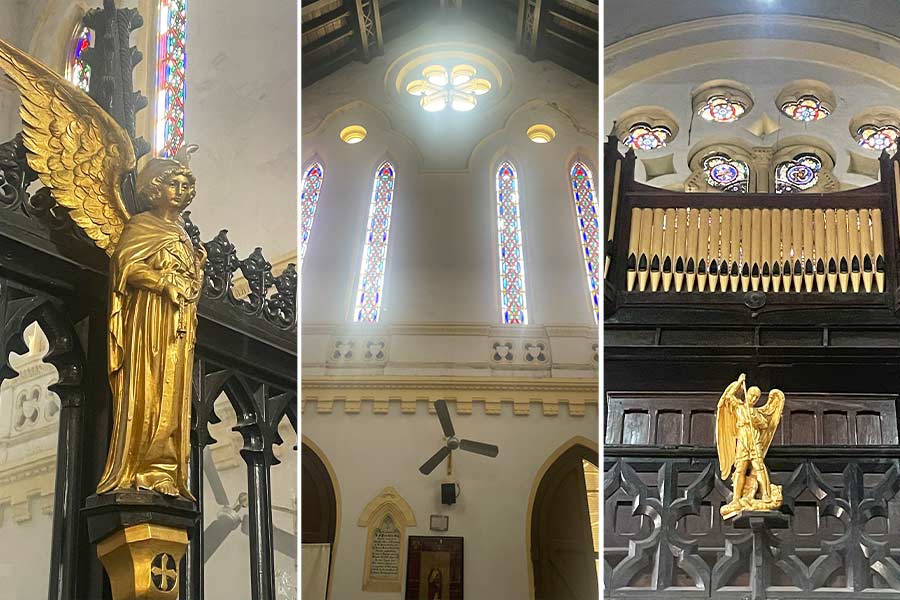 |
| At St James' Church |
“When the tutorship formally commenced, I discovered that my hand would be hesitant, the fingers would quiver and the concentration would waver. It took two months to correctly score the first piece of glass. One of the first things he asked was: ‘Do you want to learn about glass or life?’ Thereafter he asked what I wished to create. I replied ‘Saraswati.’ I explained the importance of Saraswati in our Indian lives. I started with a small panel; he said, ‘I will cut the first glass for you, after which you will be on your own.’
“One morning he called out while being perched on a ladder from the height of the second floor, showing me blue glass: ‘Do you think I should use this one?’ I was confused; the glass he was holding did not look any different from another blue. This represented one of my first lessons in understanding the different shades within each colour; the second lesson is that there is never a bad shade because the shade is only as relevant or irrelevant when compared with the glass colour next to it; the third lesson was that light differs from place to place and would often appraise a design by saying ‘This stained-glass design will look so vivid in the beautiful Indian light’; since we were once working on a Biblical stained-glass, Patrick insisted that I go to the Sunday Mass to soak the stories of Christ as he felt that they could influence what he would eventually produce; his library comprised 60,000 books and Patrick had this habit of buying all the books by a specific author, locking himself into the study for a week and emerging only after he had read all.”
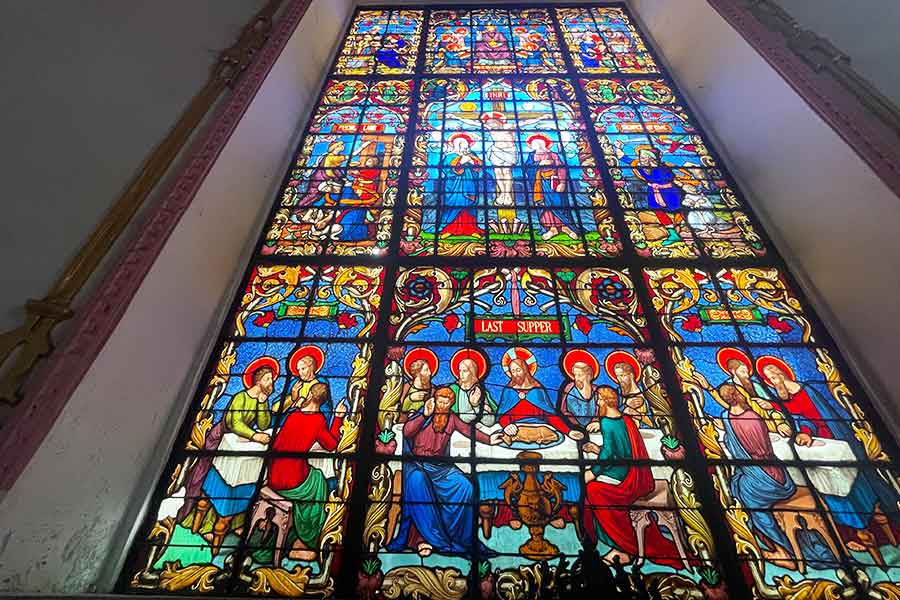 |
| At St Thomas Church |
There is a need for stained-glass heritage walks where experts ‘read’ stained glass panels and explain how these heirlooms were curated. Only then can we expect to retrieve these sheets from relatively anonymity and maybe — this is a large maybe — inspire students to learn this craft, dream big and even curate stained-glass depictions of Indian mythology that extend beyond the Bible for our public places.
One of these days, I intend to spirit Ms Saklat into the churches of Calcutta, position her in front of imposing stained-glass pieces, transition to video mode, prompt her to speak and record for posterity.
It might prove to be the most authoritative analysis in decades — or ever — of the stained-glass wealth owned by this city.

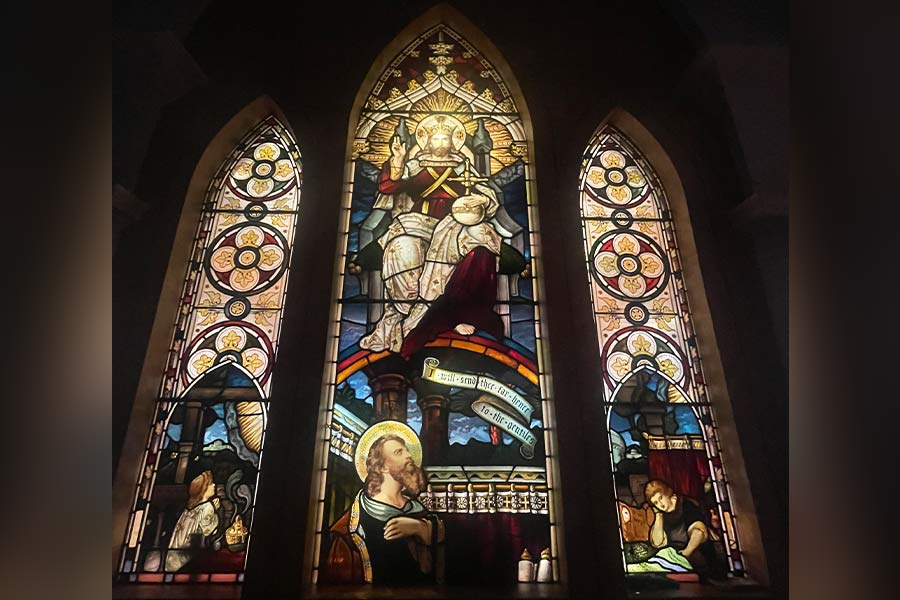
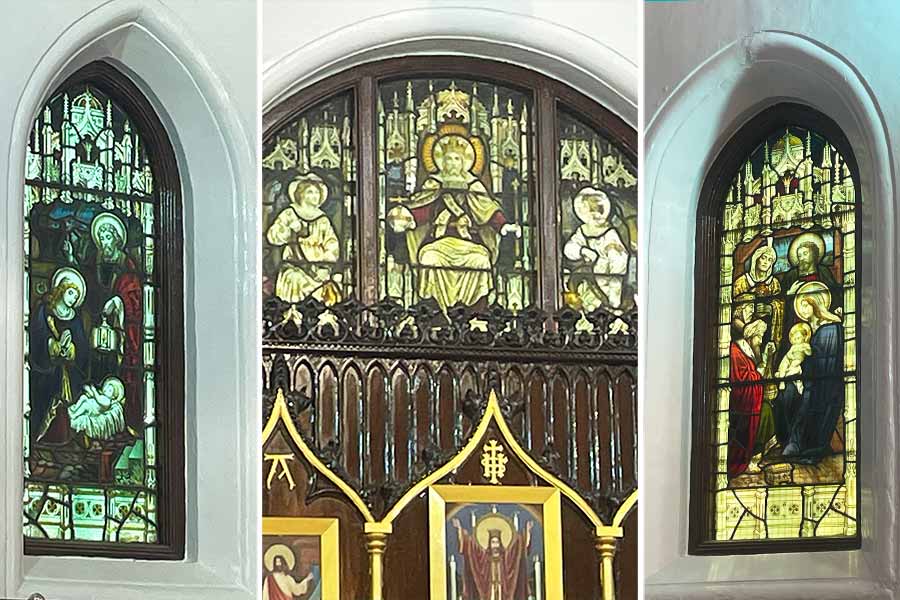

0 Response to "The stained-glass wealth of Kolkata churches: magical – and almost divine Photos: Mudar Patherya"
Post a Comment
Disclaimer Note:
The views expressed in the articles published here are solely those of the author and do not necessarily reflect the official policy, position, or perspective of Kalimpong News or KalimNews. Kalimpong News and KalimNews disclaim all liability for the published or posted articles, news, and information and assume no responsibility for the accuracy or validity of the content.
Kalimpong News is a non-profit online news platform managed by KalimNews and operated under the Kalimpong Press Club.
Comment Policy:
We encourage respectful and constructive discussions. Please ensure decency while commenting and register with your email ID to participate.
Note: only a member of this blog may post a comment.